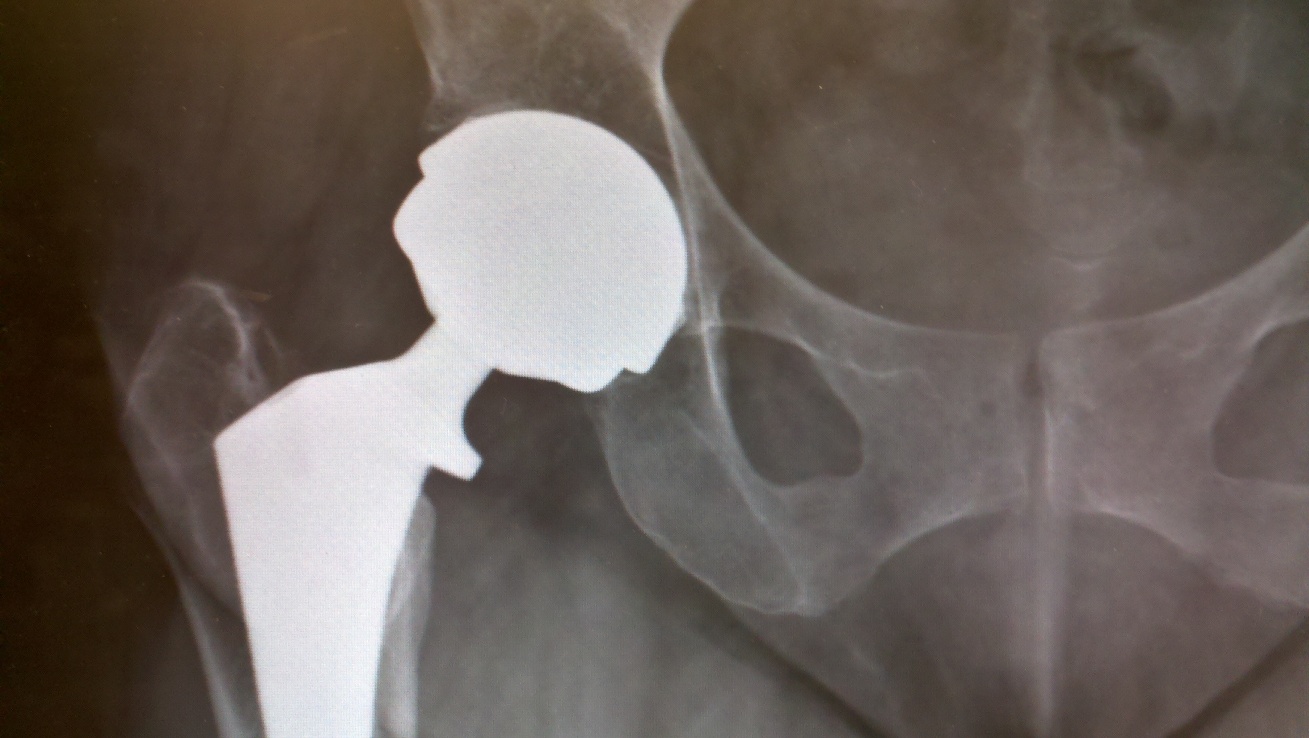- Advantages: 
- larger heads helps avoid dislocation:
- avoidance of screws
- larger heads allows greater ROM
- Disadvantages:
- metallosis
- contraindictated in renal insufficiency;
- Levels:
- normal cobalt:
- mean serum cobalt level of 0.24 µg/L (range: 0.08 to 0.50 µg/L)
- highest safe level: 5 µg/L and 60 µg/L for cobalt in urine
- references:
- Serum metal ion concentrations after unilateral vs bilateral large-head metal-on-metal primary total hip arthroplasty.
- Systemic cobalt toxicity from total hip arthroplasties: review of a rare condition Part 1 - history, mechanism, measurements, and pathophysiology.
- Systemic cobalt toxicity from total hip arthroplasties: review of a rare condition Part 2. measurement, risk factors, and step-wise approach to treatment.
- normal chromium: mean serum chromium level of 0.28 µg/L (range, 0.06 to 0.93 µg/L)
- note potential variation in the levels of chromium in plasma compared with those in serum (hence need to assess whole-blood
levels rather than levels in plasma, serum, or red blood cells alone)
- highest safe level: 17 µg/L for chromium in blood and 20 µg/L for chromium in urine;
- references:
- Release of hexavalent chromium from corrosion of stainless steel and cobalt-chromium alloys
- The effect of the diameter of metal-on-metal bearings on systemic exposure to cobalt and chromium
- references:
- Blood and urine metal ion levels in young and active patients after Birmingham hip resurfacing arthroplasty: four-year results of a prospective longitudinal study.
- How do serum cobalt and chromium levels change after metal-on-metal hip resurfacing?
- Metal-on-metal bearings total hip arthroplasty: the cobalt and chromium ions release concern
- Sensitivity and specificity of blood cobalt and chromium metal ions for predicting failure of metal-on-metal hip replacement
- Pseudotumor:
- Pseudotumors in association with well-functioning metal-on-metal hip prostheses: a case-control study using three-dimensional computed tomography and magnetic resonance imaging.
- Trunion:
- Comparison of Whole-Blood Metal Ion Levels Among Four Types of Large-Head, MoM THA Implants
M2 a Magnum: Large Metal Articulation Design Rationale
Metal-on-Metal Hip Resurfacing Arthroplasty
The effect of the diameter of metal-on-metal bearings on systemic exposure to cobalt and chromium.
Metal-on-metal total hip arthroplasty with large heads may prevent early dislocation.
The rationale for metal-on-metal total hip arthroplasty.
Renal Clearance of Cobalt in Relation to the Use of Metal-on-Metal Bearings in Hip Arthroplasty
- articles which argue against metal on metal:
- Chronic cobalt poisoning in endoprosthetic replacement
- Metal-on-metal resurfacing arthroplasty: no way under the sun!--in the affirmative.
- Painful metal-on-metal total hip arthroplasty.
- Possible Prosthetic Poison
- "Asymptomatic" Pseudotumors After Metal-on-Metal Hip Resurfacing Arthroplasty: prevalence and metal ion study.
- No Superiority of Cemented Metal-on-Metal vs Metal-on-Polyethylene THA at 5-Year Follow-up
- Reduced Articular Surface of One-piece Cups: A Cause of Runaway Wear and Early Failure
- Case Report. Cystic Lesion of the Groin due to Metallosis: A Rare Long-Term Complication of Metal-on-Metal Total Hip Arthroplasty
- A benign psoas mass following metal-on-metal resurfacing of the hip.
- Metal-on-metal resurfacing arthroplasty: no way under the sun!--in opposition.
- Metallosis After Contemporary Metal-on-Metal Total Hip Arthroplasty. Five to Nine-Year Follow-up.
- Has MOM worn out its welcome?
- Metal-on-Metal Total Hip Arthroplasty: Causes and High Incidence of Early Failure
- Polyneuropathy caused by cobalt-chromium metallosis after total hip replacement.
- Adverse Local Tissue Reaction Arising from Corrosion at the Femoral Neck-Body Junction in a Dual-Taper Stem with a Cobalt-Chromium Modular Neck

